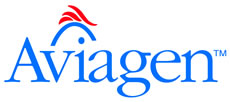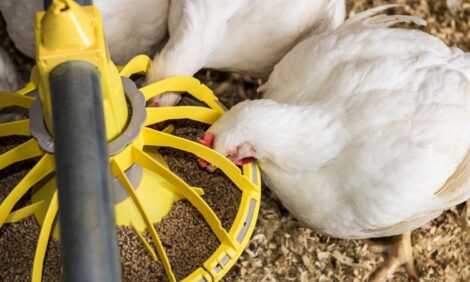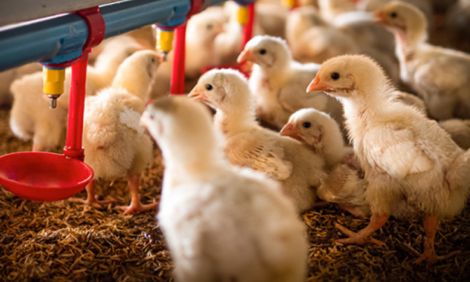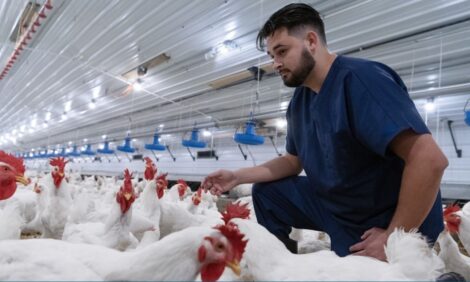



Aviagen Group's Decades of Breeding for Welfare & Sustainability: Robustness & Leg Health
Learn more about Aviagen Group's multi-environment strategy and leg health assessmentsPart of Series:
< Previous Article in Series Next Article in Series >
Editor's note: This article is an excerpt from the Aviagen Group's Decades of Breeding for Welfare & Sustainability Report and additional articles will follow. The Report is designed to demonstrate Aviagen's commitment to genetic improvement of welfare and sustainability of broiler and turkey breeds. Plus, it covers much more like techniques to ensure robustness and new methods to improve selection and genetic progress. To read or download the complete report, click here.
Robustness
A key component of good welfare is the ability of birds to thrive in a variety of production environments. Aviagen's pedigree facilities replicate typical farming environment, management and nutrition conditions and these have been continually refined over the years to keep them relevant to commercial practice.
As an example, in 2013, Aviagen Turkeys introduced a higher density brooding regime to reflect industry practice, which altered the expression of traits such as leg defects.
As pedigree birds contribute to future generations, the pedigree facilities are maintained to the highest biosecurity standards. This means that pedigree birds do not meet the spectrum of natural health challenges found in commercial poultry production.
To measure the potential of birds when grown under natural health challenges, Aviagen uses a parallel farming system where siblings of pedigree birds are grown and assessed in lower hygiene conditions.
Pedigree selections are then based on performance measurements from both locations (multi-environment selection), ensuring that only the families that perform well in both types of environments pass their genes on to the next generation.
This process started in broilers in 2000 and turkeys in 2010. Over time, this process of 'multi-environment selection' has had a dramatic effect on the robustness to various management, immune and gut challenges.
This multi-environment strategy has made current generations of birds better able to adapt to the wider range of management circumstances they may encounter in the field. This testing of siblings has led to more robust animal populations with higher livability and better uniformity and continues today.

Leg Health
Leg Health has been a key feature in Aviagen's breeding programs since the 1970's.
This began with the removal of birds with any clinical leg defects (broilers) and walking assessment and defect selection in turkeys (see Figures 8 and 9).
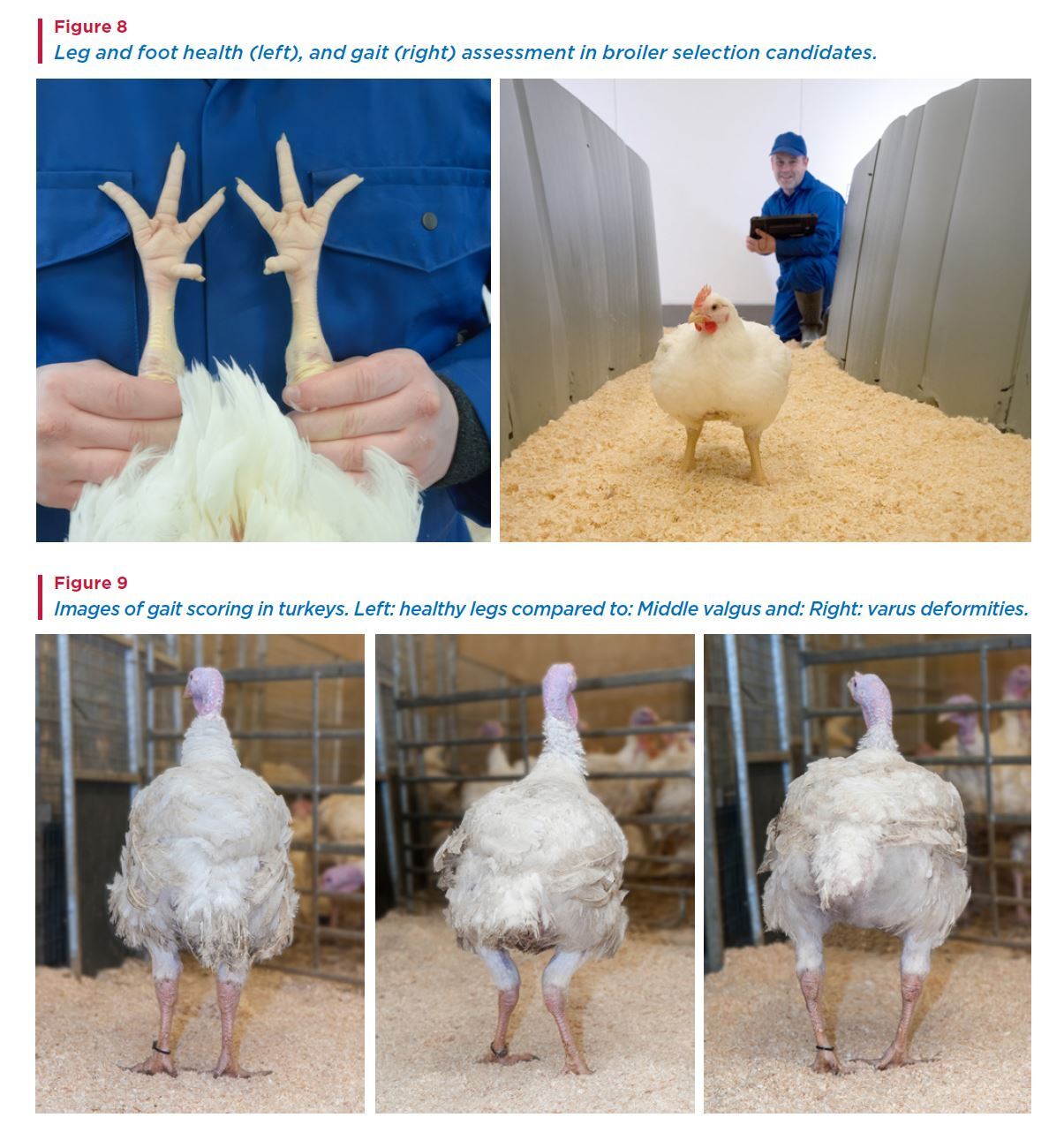
Along with leg defects each bird is also screened for footpad dermatitis (FPD), hock lesions and toe defects. Any birds displaying any type of leg defects are not considered for selection (to contribute to the next generation). This policy continues to this day in both broiler and turkey programs and has been a driving factor in reducing the genes associated with leg defects within our populations (Figure 10) as demonstrated by Kapell et al., 2012 (broilers) and Kapell et al., 2017 (turkeys). The addition of family-based selection has also made it possible to exclude defect-free individuals from high-defect families.
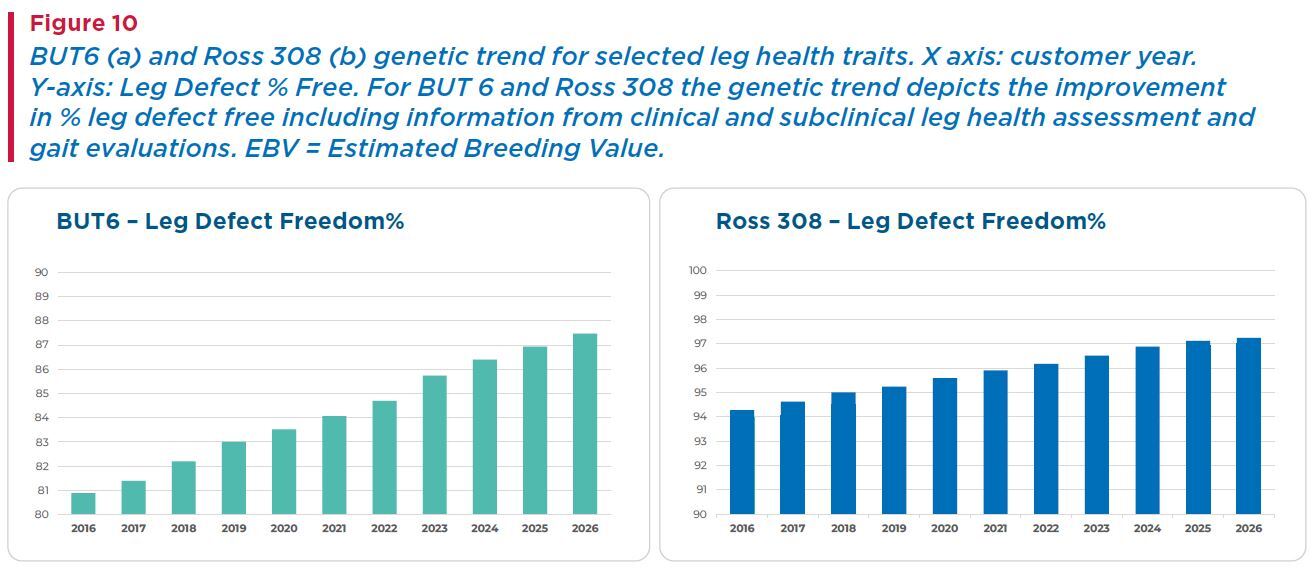
The turkey breeding program has a long history of selection for gait. Also in the chicken breeding program improvements in gait score are clear (Figure 11). Ross 308 broilers showed a steady gait improvement from 2016 to 2022.
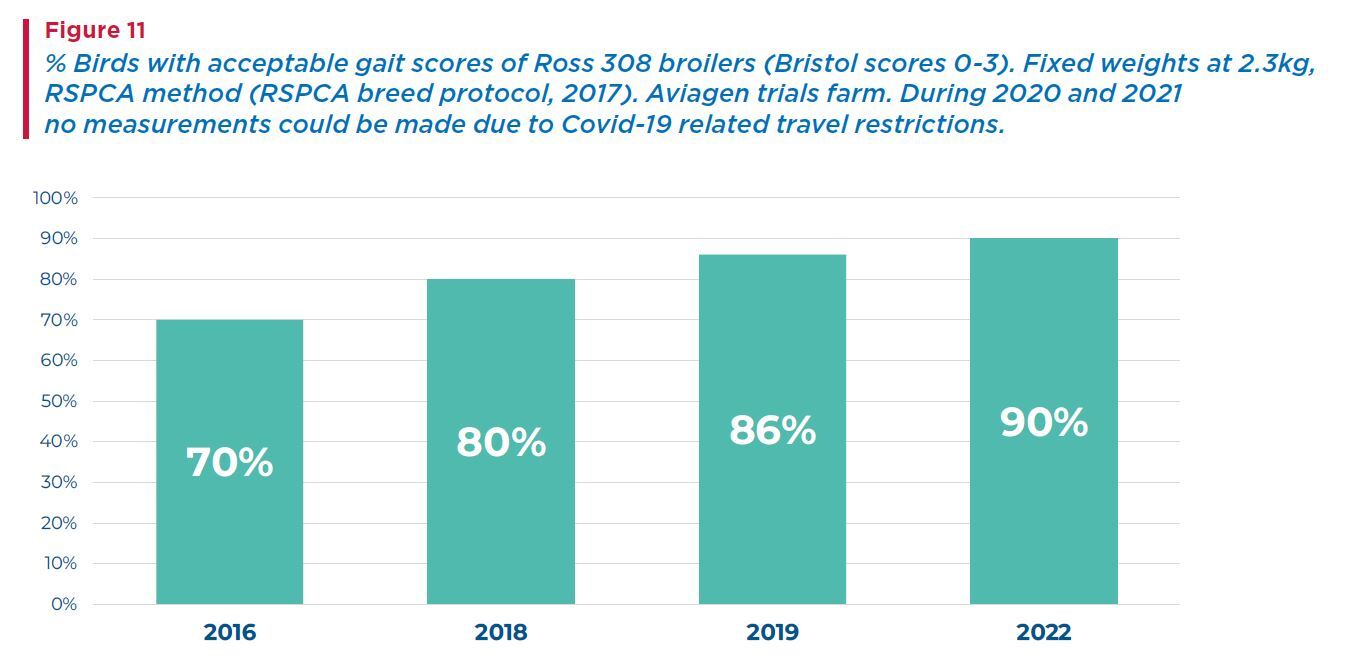
The scope of leg health assessment has been expanded over the years to include technology such as the pioneering use of a hand-held x-ray device (Lixiscope) for the detection of clinical and sub-clinical tibial dyschondroplasia (TD) (Figure 12). This work began initially in broilers in 1989; new generation Lixiscopes in 2007-8 improved the level of detection and also made it possibly to apply this technology to turkeys where, alongside gait and defect assessment, it continues to be used today.

Together, inclusion of a range of leg health traits in the breeding goal has improved leg health in the field as well, as the trend from Agriculture and Agri-Food Canada from the Government of Canada shows (Figure 13).
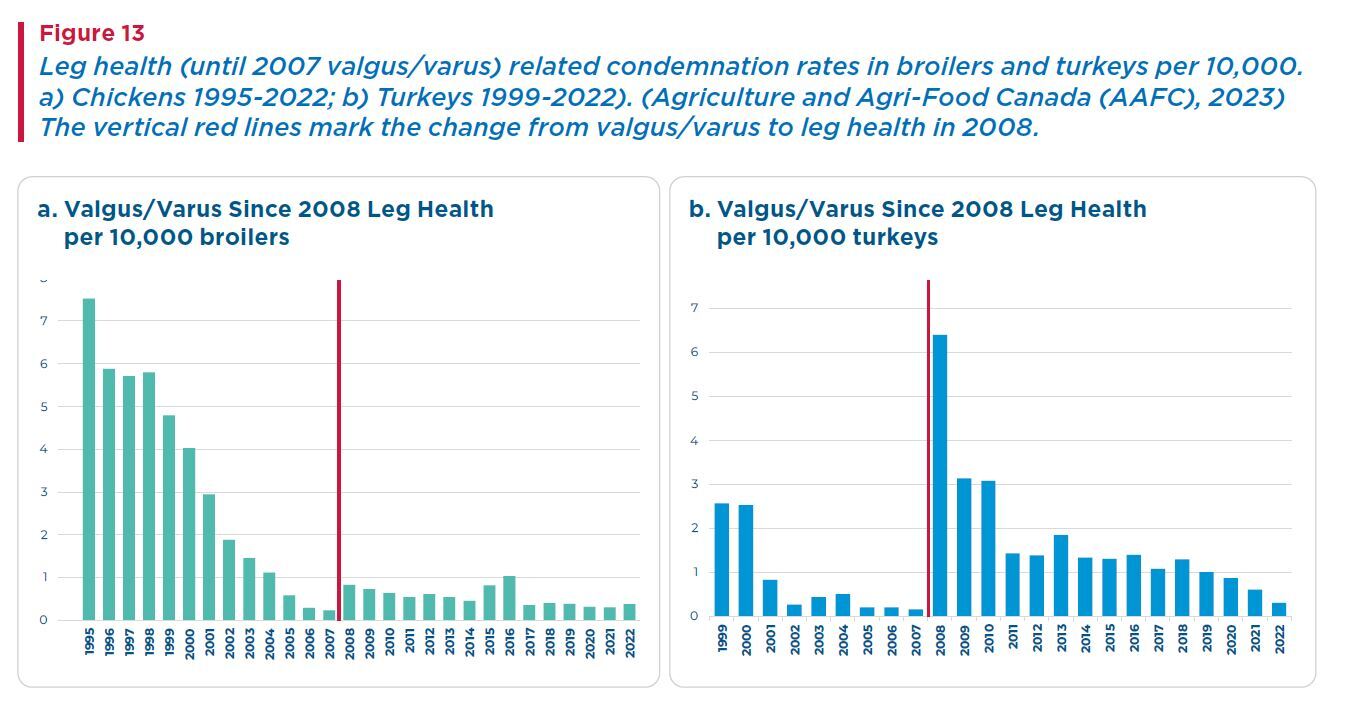
Improvement in leg health has been achieved alongside liveweight gains. This is an example of the decades' long application of balanced breeding where adversely correlated traits can be improved simultaneously (Figure 14).
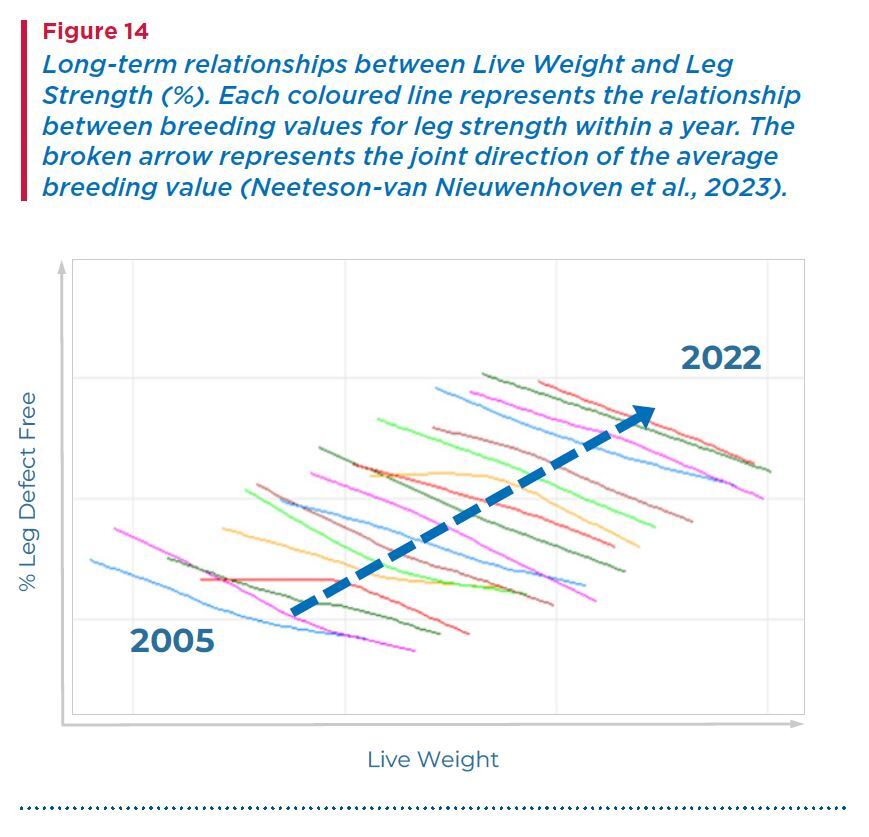
Developments in medical imaging technologies present new opportunities within poultry breeding. Today, in both broiler and turkey breeding programs, computed tomography (CT) is used to measure a range of traits (Figure 15). As well as recording accurate measurements of breast and leg yield, algorithms have been developed to automatically detect sub-clinical incidence of TD within the birds.
CT imaging also allows the recording of a variety of novel skeletal and morphological features that could make it possible to determine the ideal architecture for good gait and balance.
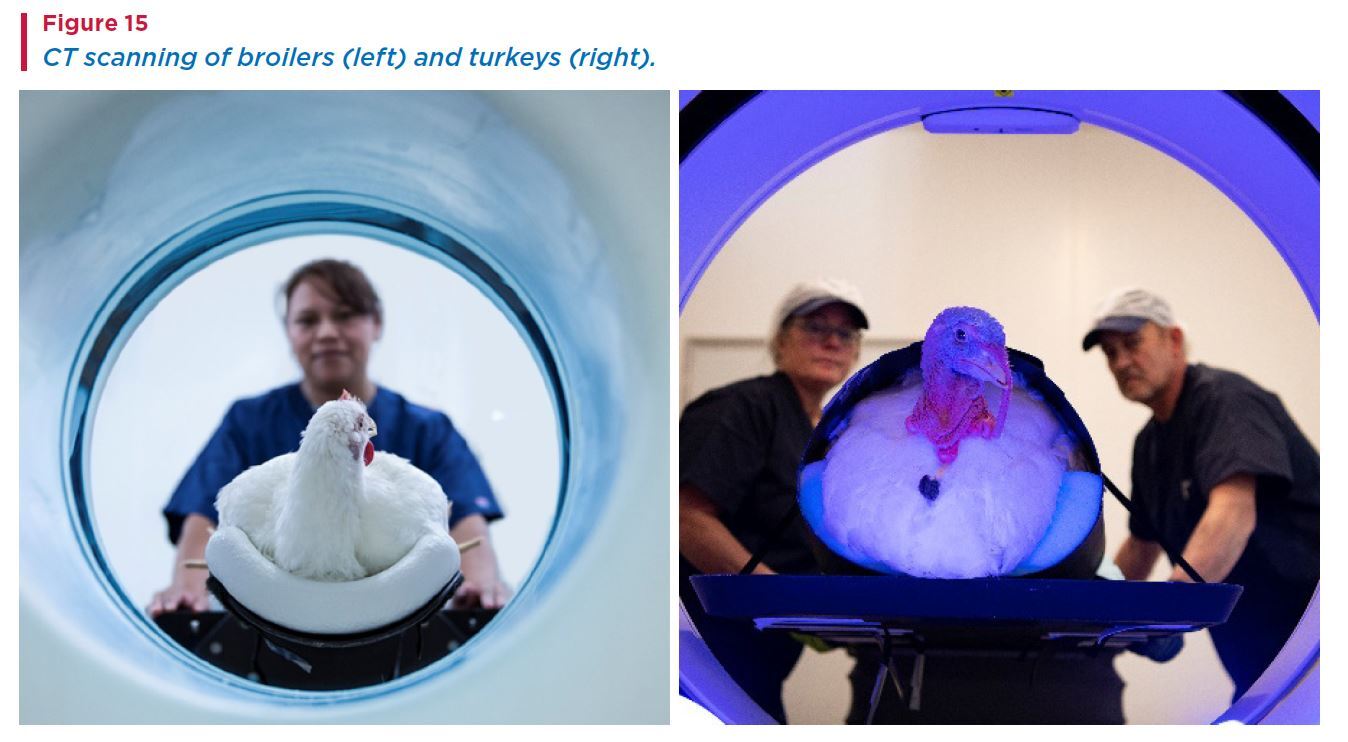
FPD is a common welfare indicator. Genetic selection to improve FPD began in 2008 in broilers and turkeys, by scoring footpads on every pedigree individual and selecting individuals showing a low genetic predisposition to develop FPD. FPD scoring takes place in the pedigree environment and on siblings in the lower hygiene environment, to ensure robustness under field conditions. Wet litter is a key contributor to the incidence of FPD (Mayne et al., 2007). From 2011, starting with turkeys, Aviagen implemented individual water intake measurements using technology similar to its feed stations to identify birds with excessive water consumption which have been shown to contribute significantly to litter moisture. The combination of targeted exclusion of individuals creating wet litter as well as those with a lower tendency to develop FPD is an effective genetic means of improving footpad health of the future population.
Figure 16 shows the trend of FPD improvement in the pedigree program for turkeys. The measurement of FPD was improved in 2018 by adding footpad shape which is very highly correlated to FPD but with around twice the heritability allowing greater levels of progress to be achieved.

To read or download the complete report, click here.







